As a track captain at this year’s Dynatrace Perform 2020 (February 3-6, 2020), I am excited to lead the “Release Better Software Faster” track. In the last several years, I’ve led many sessions on DevOps, NoOps, Continuous Delivery, Continuous Performance, Shift-Left, Self-Healing, and GitOps. My goal is always to deliver tangible best practices that can be implemented today, and that can help teams transform their organization to true software-centric, digital cloud-native businesses.
Zeroing in on the current state of DevOps and autonomous cloud and advancing performance
To validate that the tracks we put together were directly hitting the mark to help organizations transform, I did a lot of data analysis and had conversations with our global customers, partners, and our own team at here at Dynatrace. And what I confirmed is that while global adoption of DevOps still has room to mature (State of DevOps Report, DORA DevOps Maturity Report, Dynatrace’s Autonomous Cloud Management (ACM) Survey), 95% of companies are still not fully leveraging the power of DevOps, automation, Cloud Native, or NoOps to help them achieve advancement.
Let’s take a look at two key indicators from our 2018 Dynatrace ACM Survey:
- MTTI (Mean Time to Innovate): How long does it take to push a new feature that is fully tested, ready to go to production, until end-users receive it?
- MTTR (Mean Time to Remediate): How long does it take to detect a problem, identify its root-cause, and remediate the issue so that users are no longer impacted?
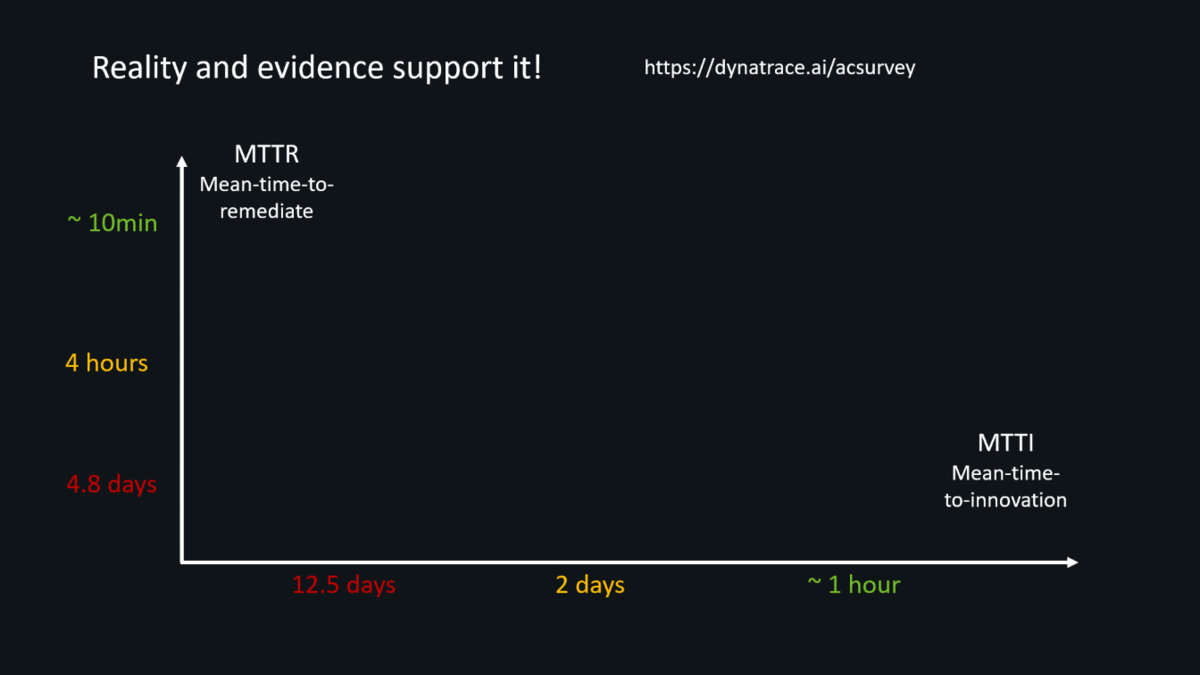
The Dynatrace ACM Survey results above indicate that most organizations are not releasing better software faster. Some of the reasons are because most enterprises are slowed by manual processes, they don’t have the right data to make better decisions, faster – or are still trapped in silos where biz, dev, and ops are working in isolation instead of collaborating on measurable goals together.
Everyone can advance today – and our Perform tracks will help you start!
At Dynatrace, we faced similar challenges as we went through our own transformation (and it was successful: we’ve been named furthest for Completeness of Vision and highest Ability to execute in the Garner Magic Quadrant for Application Performance Monitoring). But at the time, we foresaw that cloud, microservices, and containers were creating a better, faster way of developing and deploying software. We embraced these technologies and infused AI and automation into our processes, increased self-service capabilities, and created a cultural shift that gave more autonomy and empowerment to our dev and ops teams.
We’ve taken these lessons-learned and baked them into Dynatrace’s Autonomous Cloud Management (ACM), a culmination of best and proven practices that we share every day with our customers (who will also be joining us in some of our sessions and telling their stories). The “Release Better Software Faster” track will break out the ACM concept pieces and help attendees gain a better understanding of how they can automate their enterprise, innovate faster, and deliver better business ROI.

A game-changing two days of enhancing business and IT performance
Below is a look at the track breakdown and in this blog we’ll take a look at the key learnings you can expect from sessions 1-4. Watch for Part II, where we continue the learning advancements and cover sessions 5-7.
- How to transform into a NoOps organization
- Democratizing data – monitoring-as-a-self-service for biz, dev and ops
- Increase quality and agility with load & performance engineering as a self-service
- Build resiliency into your continuous delivery pipeline with AI and automation
- Reduce risk and iterate faster – the right way to deploy canary, blue/green and feature flags
- NoOps: Reaching zero-incident prod through auto-remediation-as-code
- Introducing keptn* : a fast path to Autonomous Cloud Management (or NoOps-in-a-box)
* keptn is an open-source enterprise-grade control plane for cloud-native continuous delivery and automated operations
Key learning 1: “How to transform into a NoOps organization”
This session will provide an overview of key track goals and what attendees can learn and take home. We’ll be joined by Dynatrace’s Autonomous Cloud Enablement (ACE) team (our former DevOps team) to review team concepts and roles, and how they keep up with constant growth and ever-changing technology stacks that must be supported. They believe the only way to maintain agility, flex and scale is to be “all-in on NoOps, and all-in on ACM”.
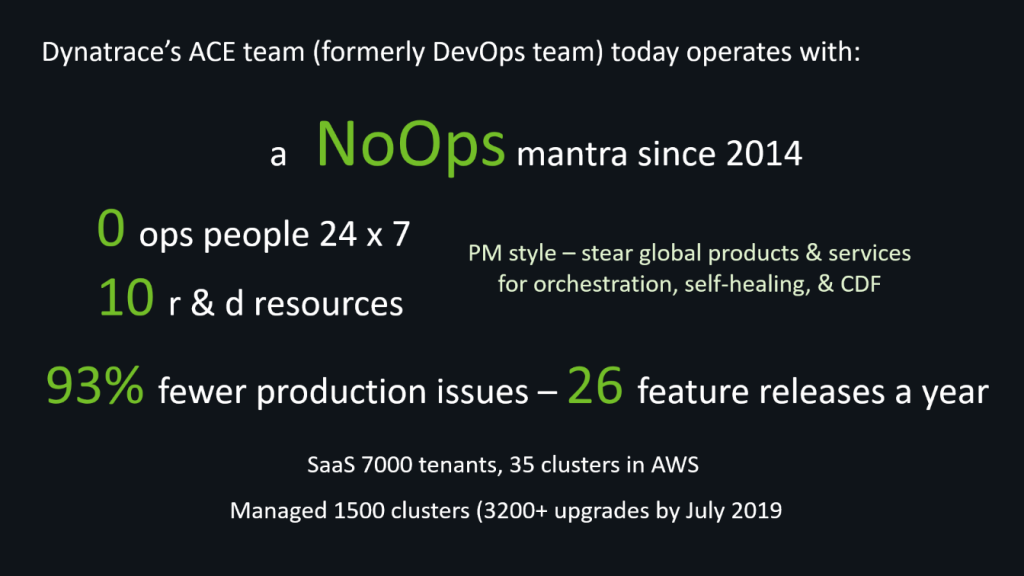
The session will also discuss how the team integrates and automates cloud technology with our suite of DevOps tools and how they enable biz, dev & ops to become more autonomous by providing self-services around ACM’s four best practice areas: monitoring, quality, delivery, and operations.
Key learning 2: “Democratizing data – monitoring-as-a-self-service for biz, dev, and ops”
The benefit you get from ‘monitoring as a self-service’ is that you have all the answers, at the right time, for the right people or tools, to make the best decision for delivering perfect business outcomes. Now we’ll start to learn how to automate monitoring in every environment; how to start treating monitoring configuration as code; and how to make data consumable as a self-service for development, quality engineers, architects, DevOps, SRE, ops, and business teams.
You’ll discover how to integrate Dynatrace into a configuration change (e.g. Chef, Puppet, Ansible), or delivery tools (e.g. Jenkins, XebiaLabs, Azure DevOps, AWS CodePipeline, keptn); how to automate monitoring roll-out, tagging best practices and dashboard creation as well as setting up SLA monitoring through synthetics.
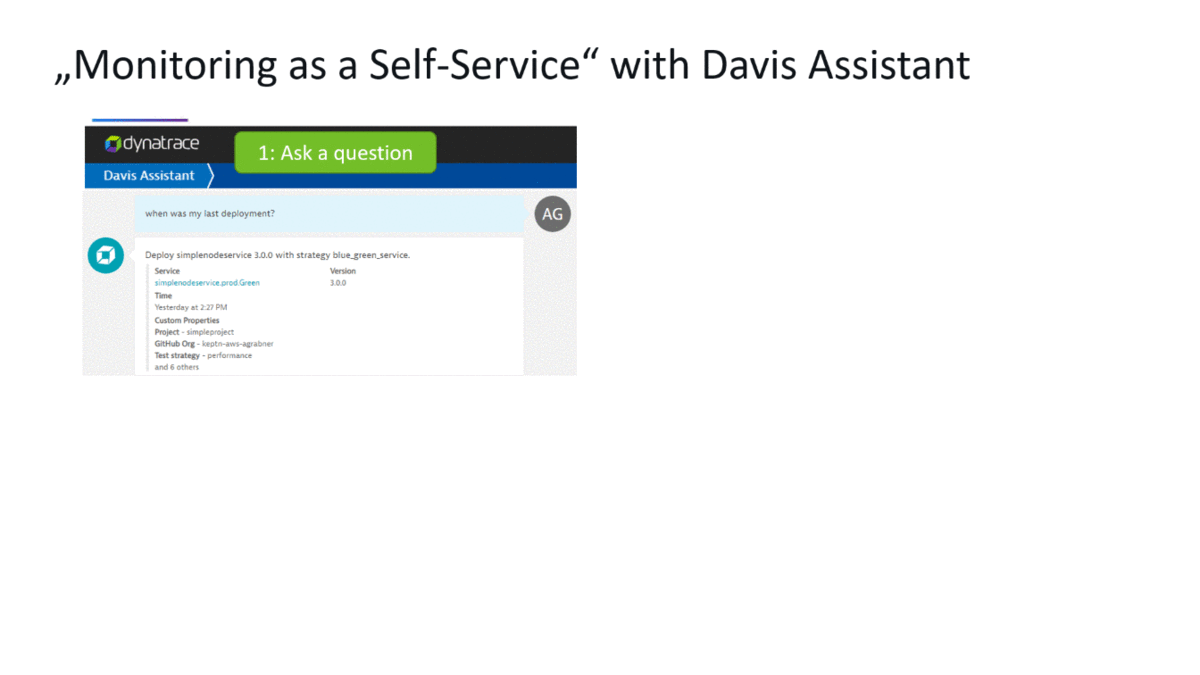
Key learning 3 – “Increase quality and agility with load & performance engineering as a self-service”
For me “Performance as a Self-Service” means that I, as an engineer, can get performance feedback about my latest code changes without having to wait for performance architects to run tests for me and analyze the results, or without having to wait for the next available time slot when the performance environment becomes available.
You will learn how organizations are transforming their classical “Performance Center of Excellence” teams into a modern automated performance as a self-service model by leveraging the automation APIs of modern testing and monitoring tools in combination with cloud technologies.
We’ll go over how to integrate Dynatrace with your load & performance testing tools (e.g. Neotys, JMeter, LoadRunner); how to analyze the data, both through UI, as well as how to automate analysis through the API, and push the data to other tools (e.g. Jira, Slack, MS Teams). We’ll cover Request Attributes, calculated Service Metrics, and using Dynatrace Events API to deliver notifications on test cycles.
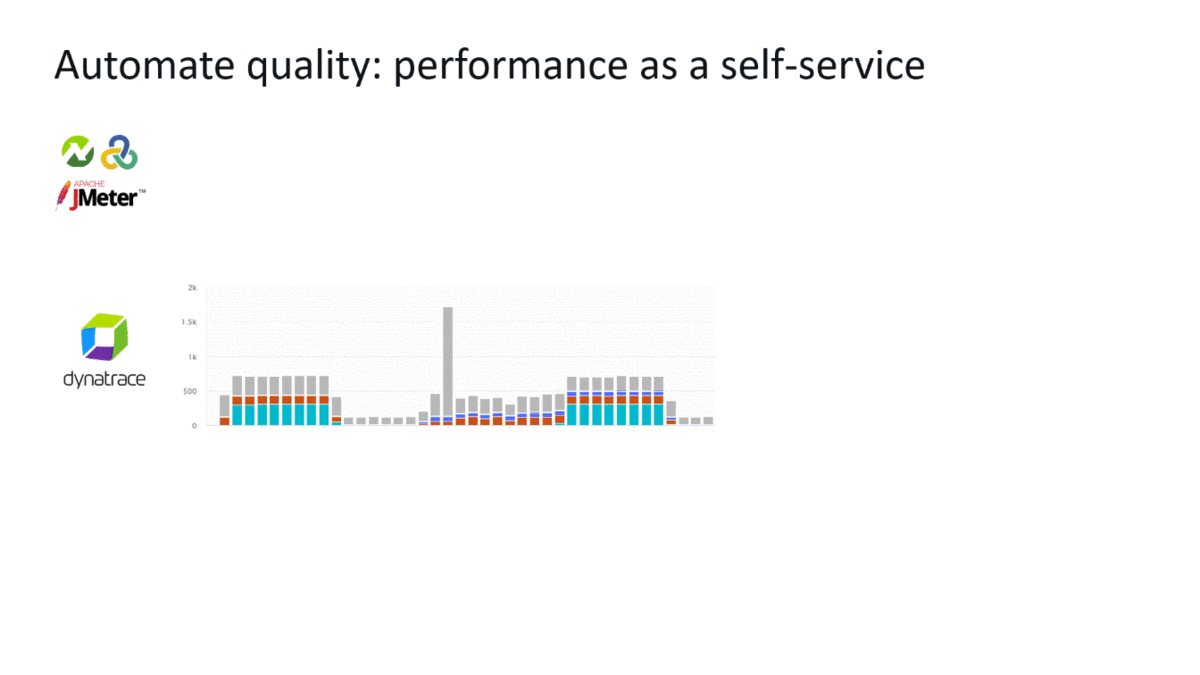
Key learning 4 – “Build resiliency into your continuous delivery pipeline with AI and automation”
I coined “The Unbreakable Pipeline” a couple of years ago when I built the first quality gate implementation as part of my Unbreakable DevOps Pipeline tour. What is it exactly? It is a delivery pipeline that doesn’t allow me to break end-user experience; that stops bad code in pre-production, and through automated canary or blue/green deployment validation ensures a non-broken production environment.
In this session, we’ll explore how to integrate quality gates into your existing delivery pipelines; we explain the concept of Service Level Indicators (SLIs) and Service Level Objects (SLOs) and how to use them in combination with your automated tests to stop bad code changes in pre-production. We’ll elaborate on how to use the same concept for production blue/green, canary, and feature flag deployment validation.
This session will feature keptn’s Quality Gates capability, as it leverages the new Dynatrace Metrics APIs and the new calculated Service Metrics in order to evaluate Dynatrace specific SLIs against their SLOs. These quality gates are a core part of keptn, but can be integrated through the keptn API with your existing delivery pipelines that live in e.g. Jenkins, GitLab, Azure DevOps, Harness.
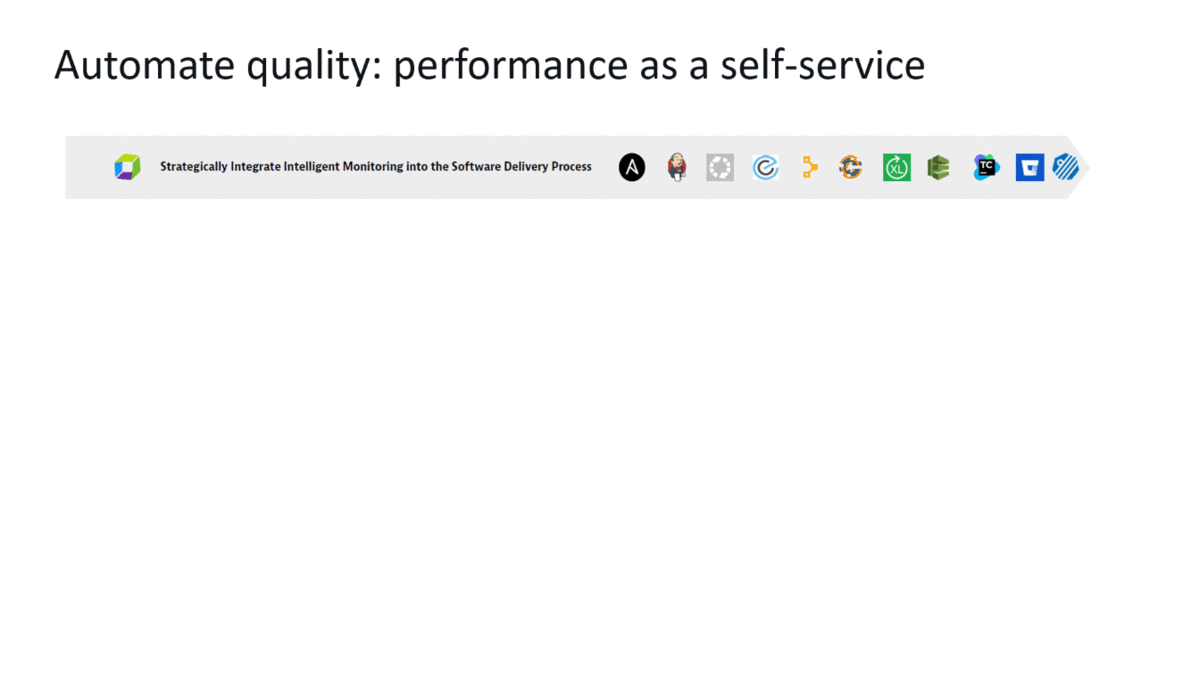
Watch for our next blog – key take-aways from sessions 5-7
Stay tuned over the next few weeks for another blog where we will look at:
- Key learning 5: Reduce risk and iterate faster – the right way to deploy canary, blue/green and feature flags
- Key learning 6: NoOps: Reaching zero-incident prod through auto-remediation-as-code
- Key learning 7: Introducing Keptn: a fast path to Autonomous Cloud Management (or NoOps-in-a-box)
- “DevOps in Action”: my Mainstage appearance where I’ll bring my friends DevOps Activist friends Abigail Wilson from CFA and Nestor Zapata from Citrix on stage
Don’t wait! This was a sampler to get you excited about the learnings and action you can take in advancing your company’s performance as you return home from Perform 2020. But get ready now! Register today for Perform 2020 – and also take a closer look at the full Perform agenda.




Looking for answers?
Start a new discussion or ask for help in our Q&A forum.
Go to forum